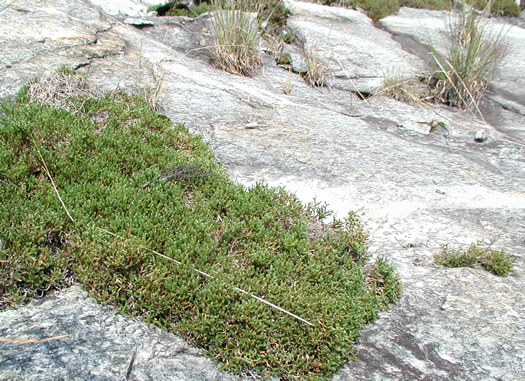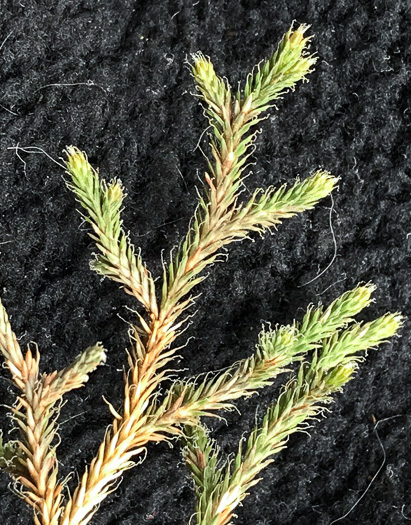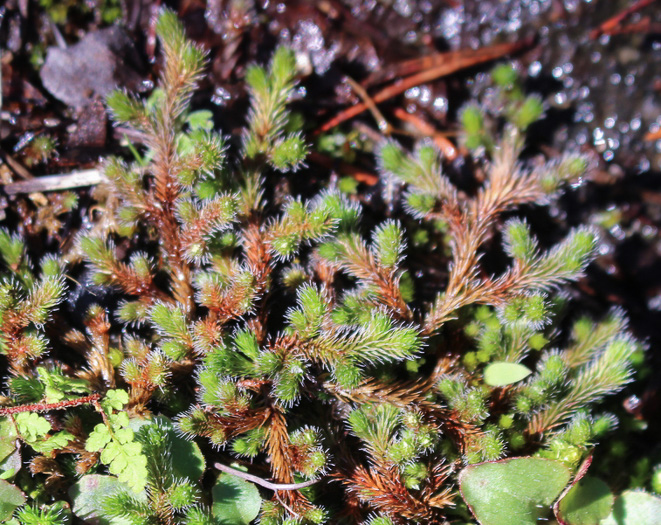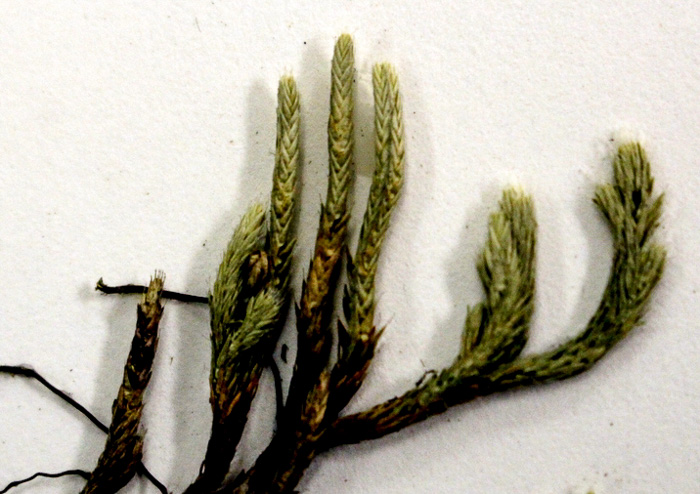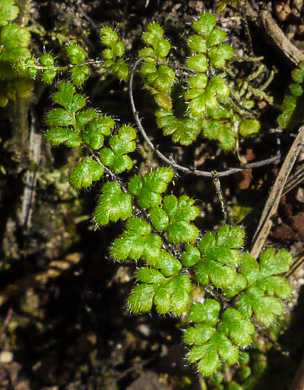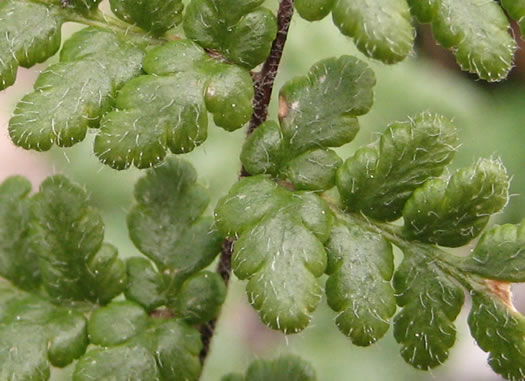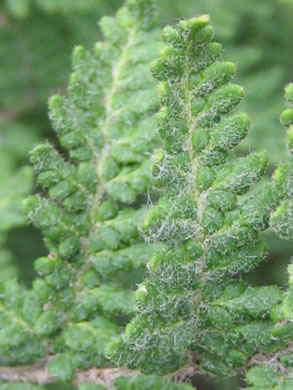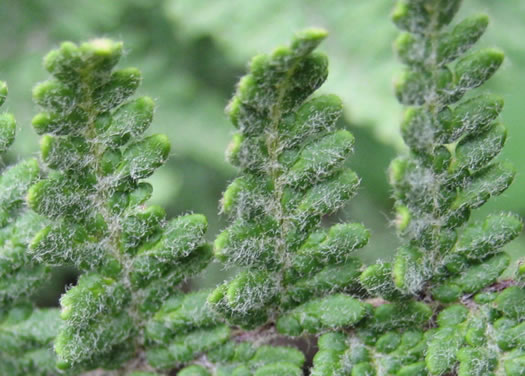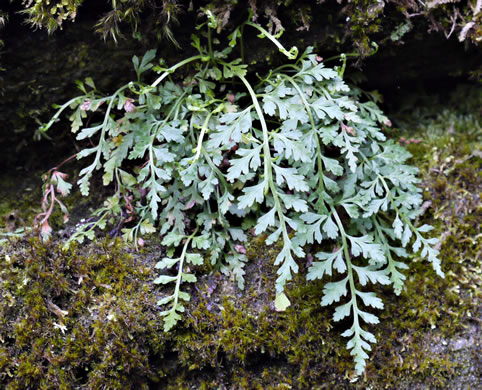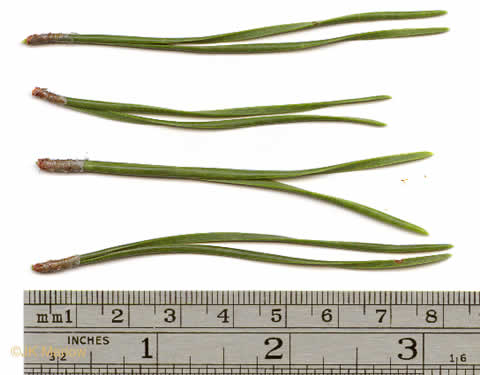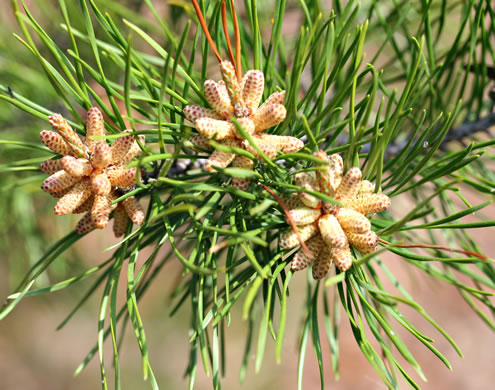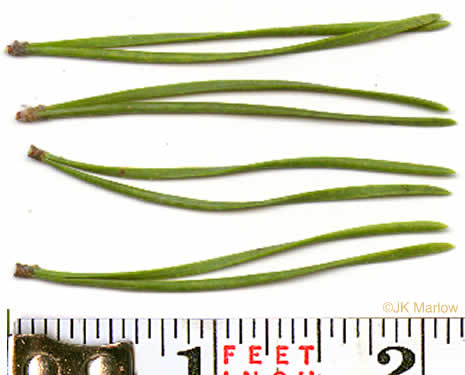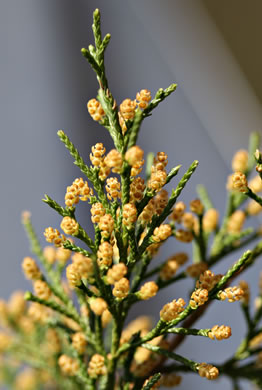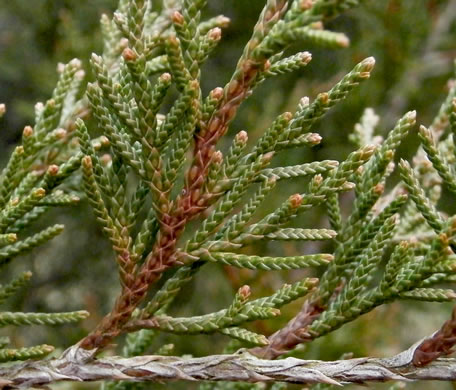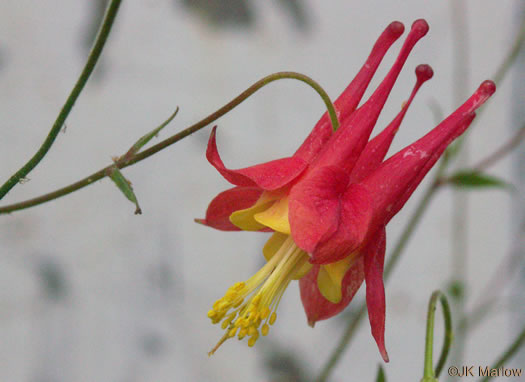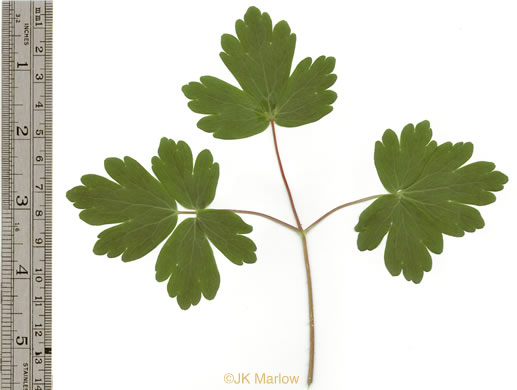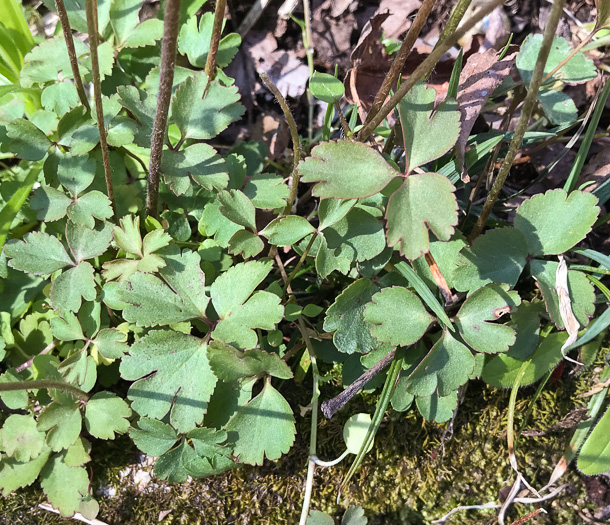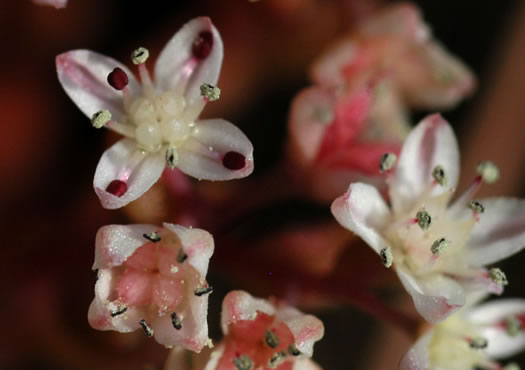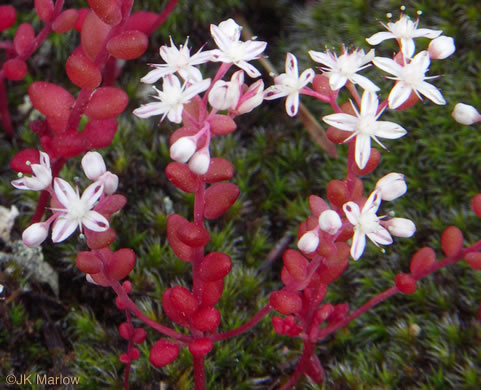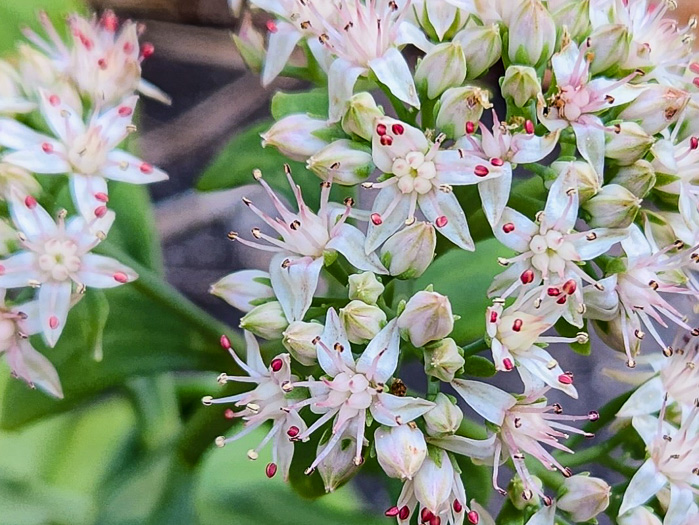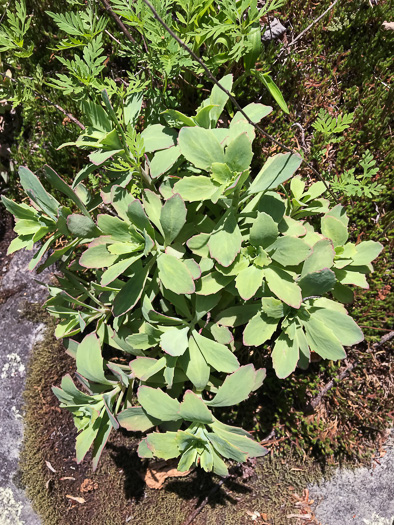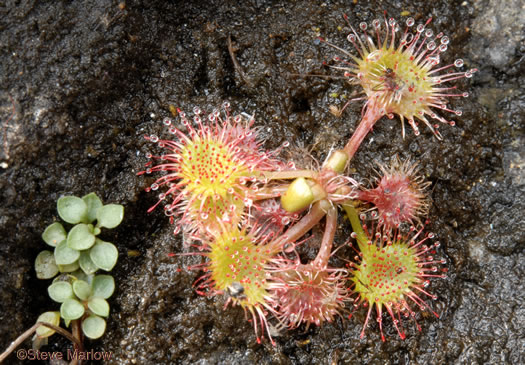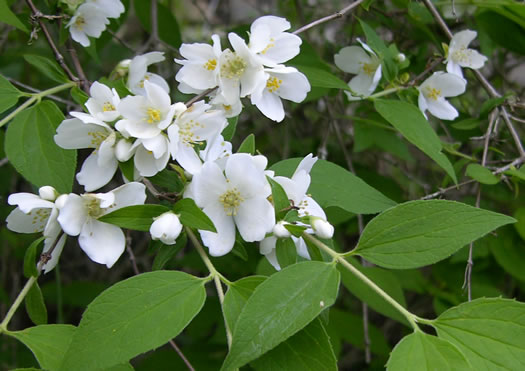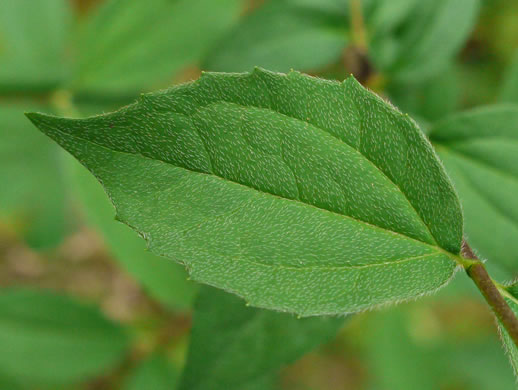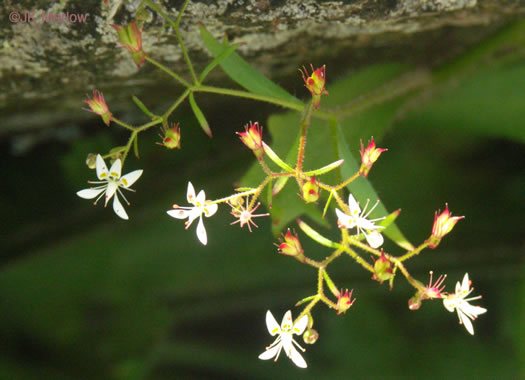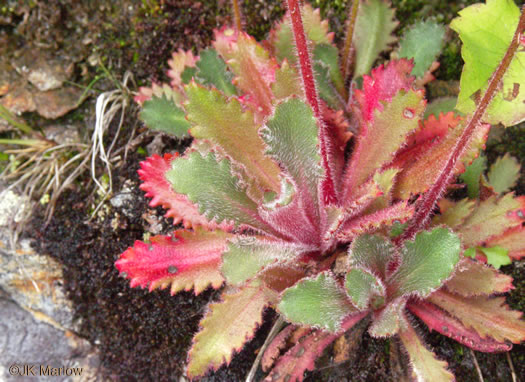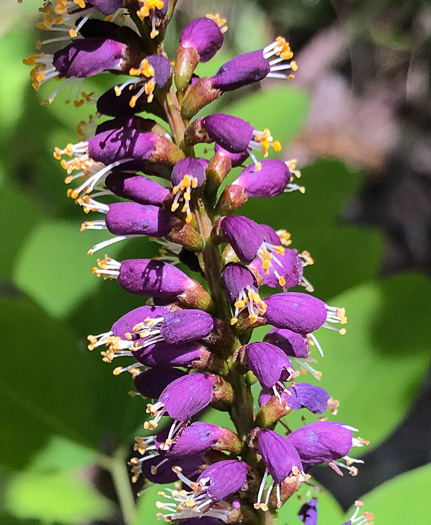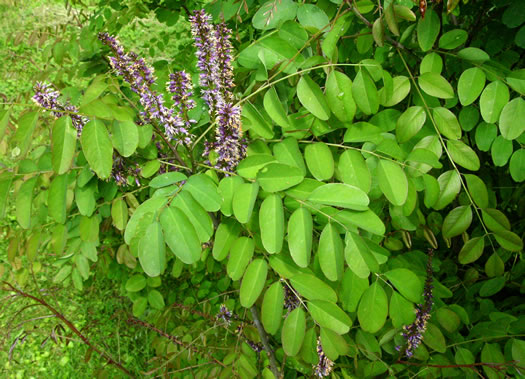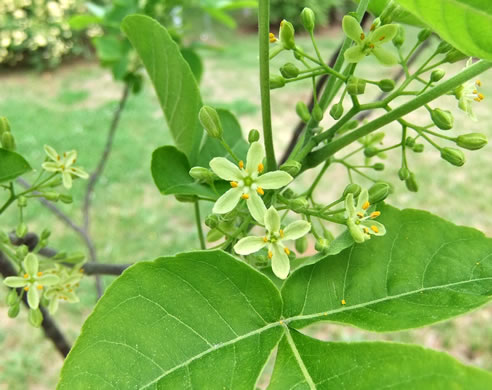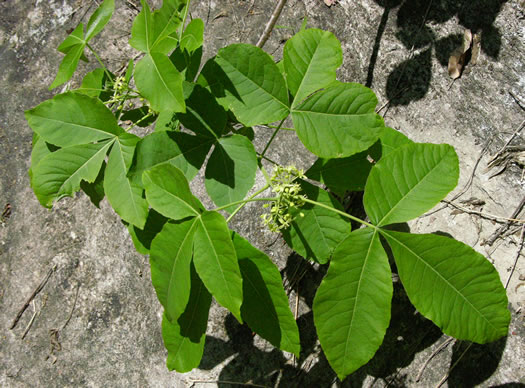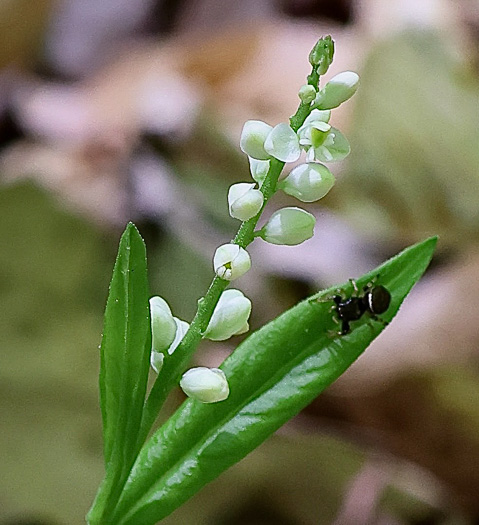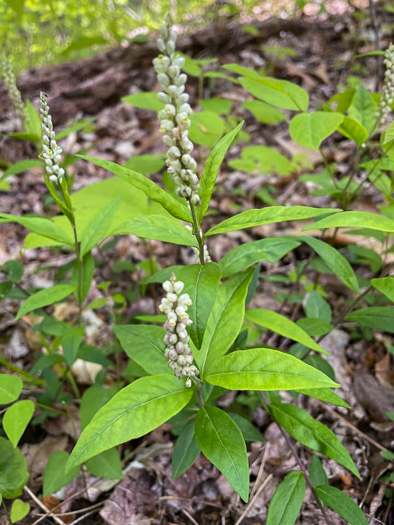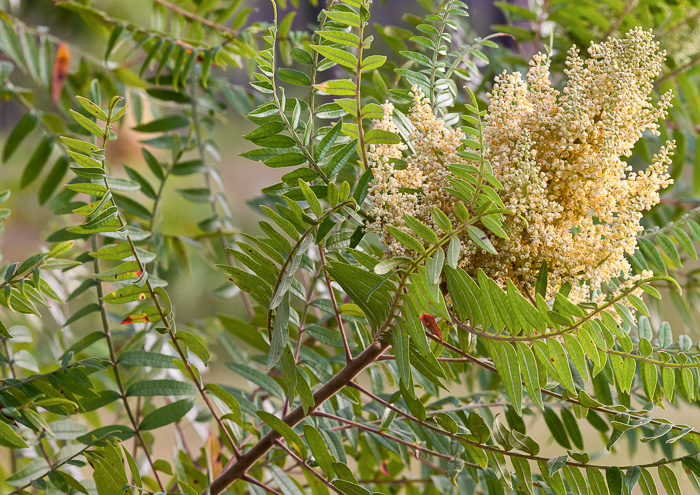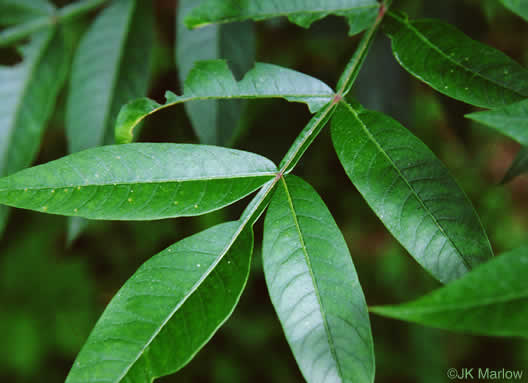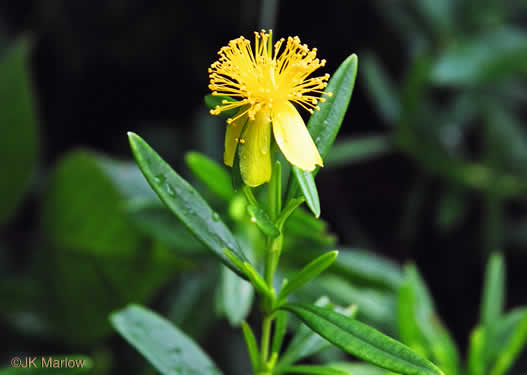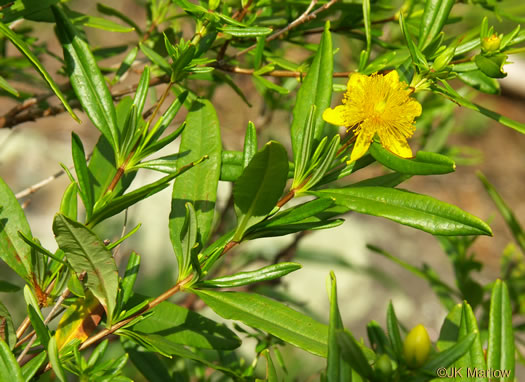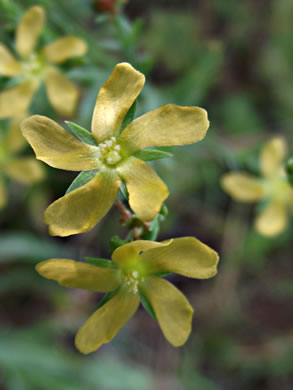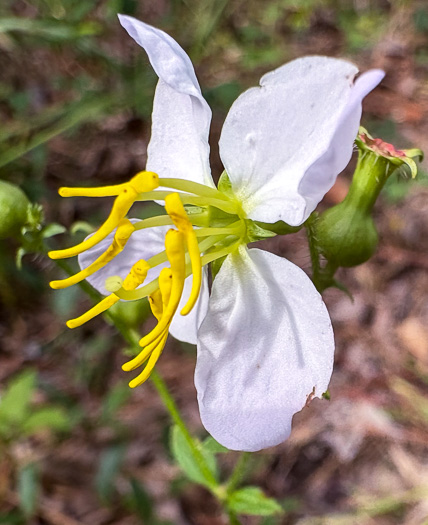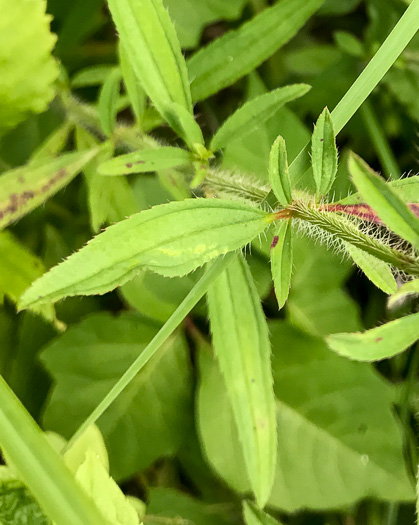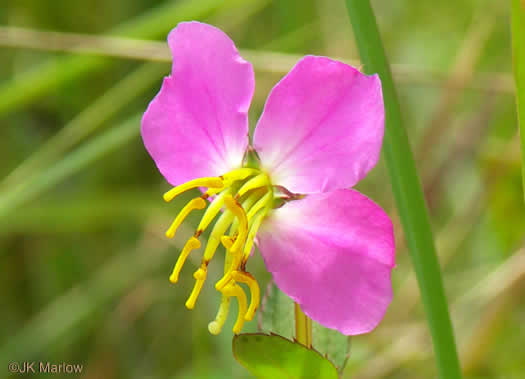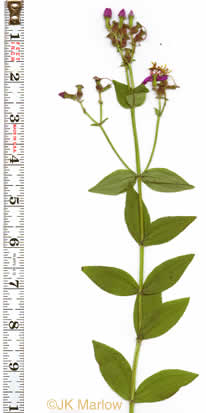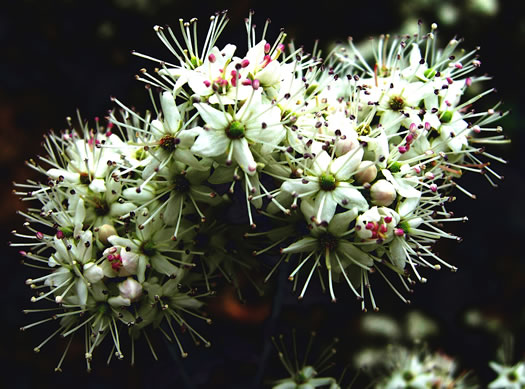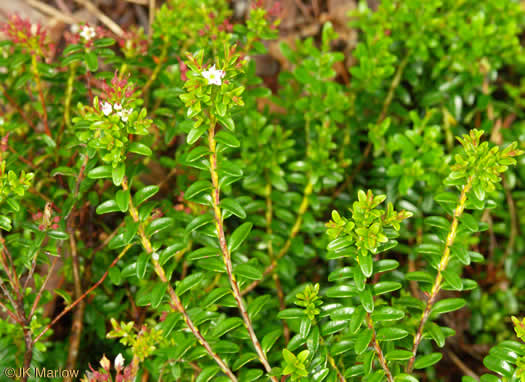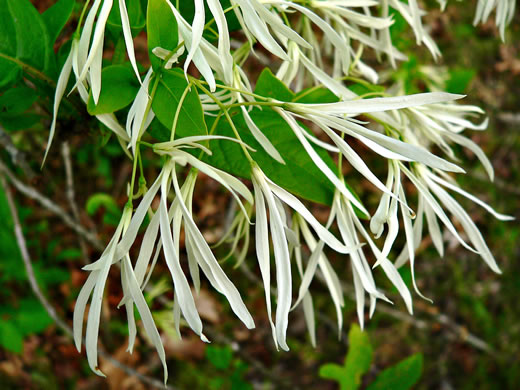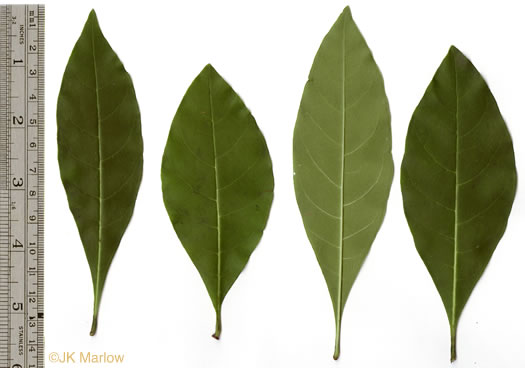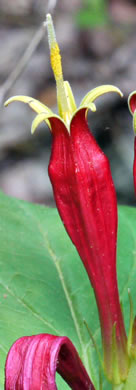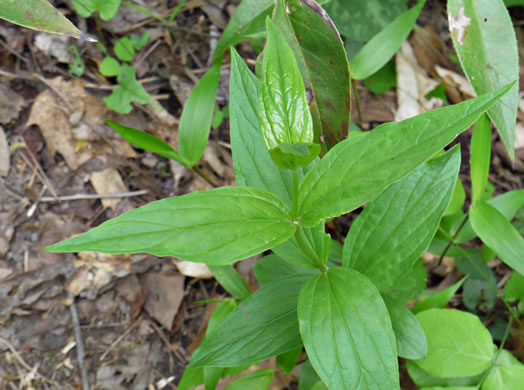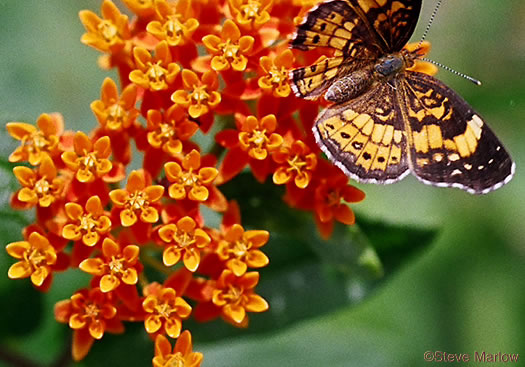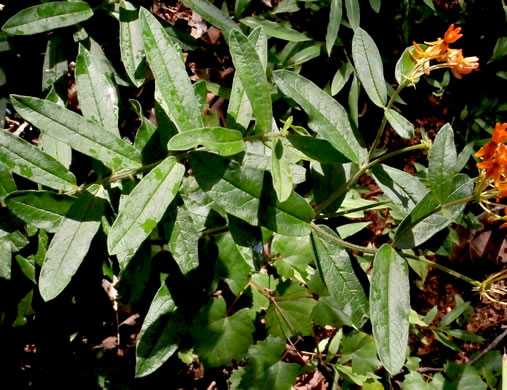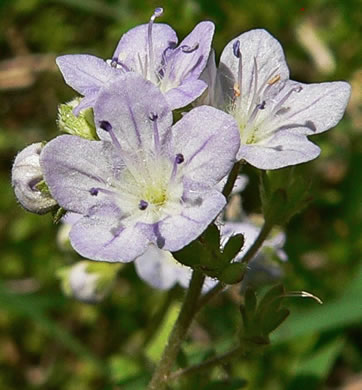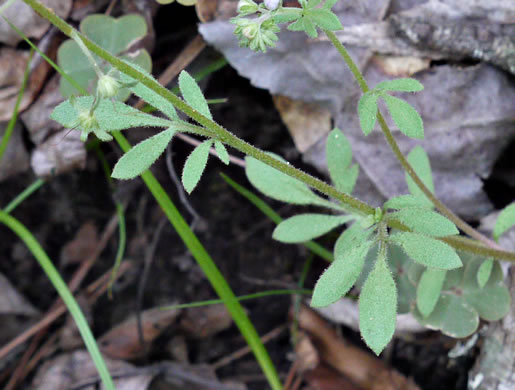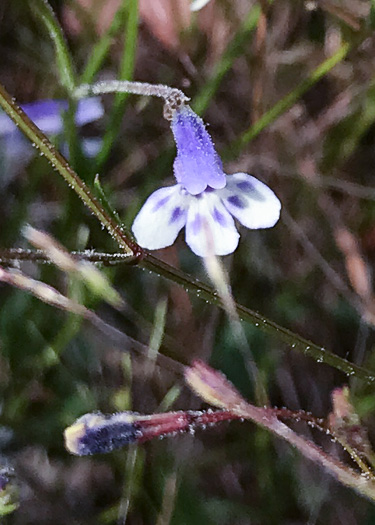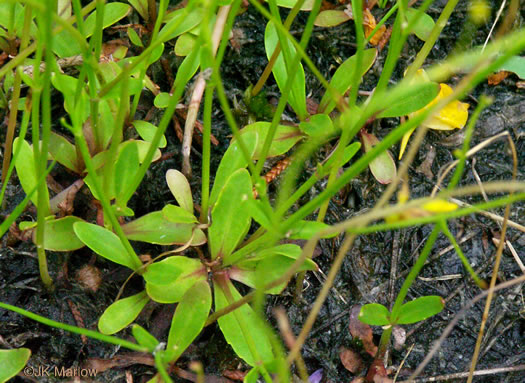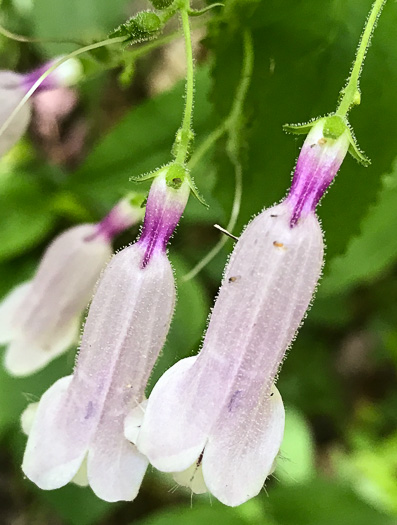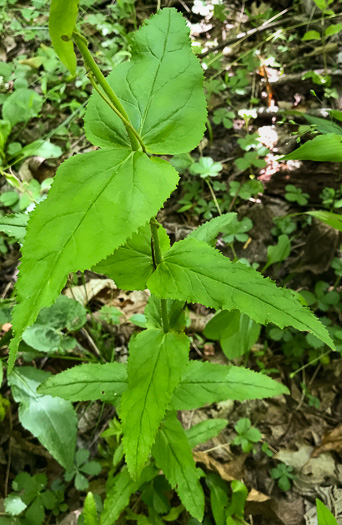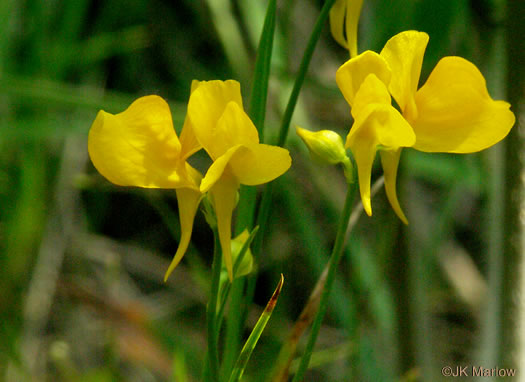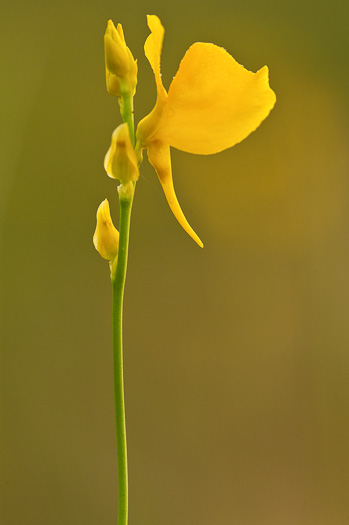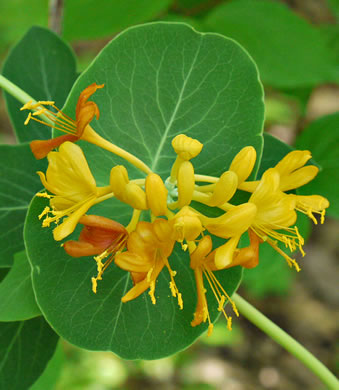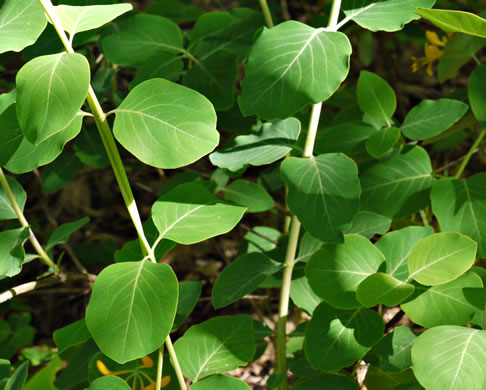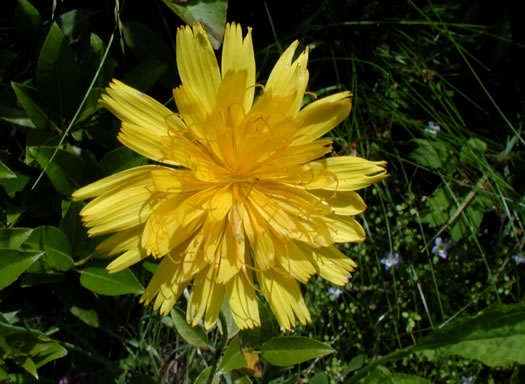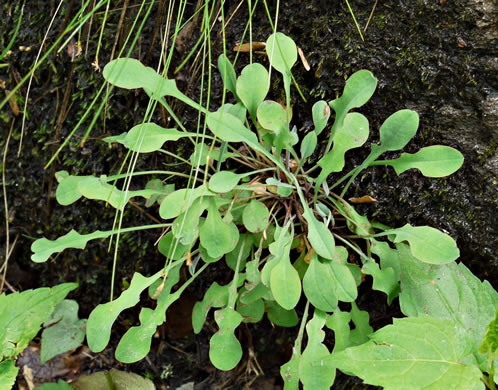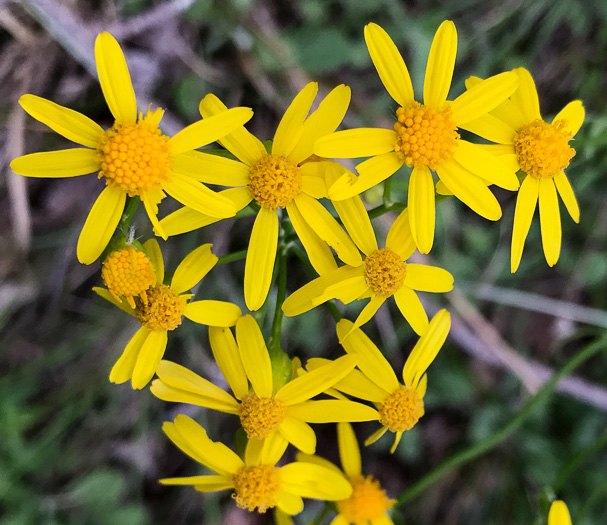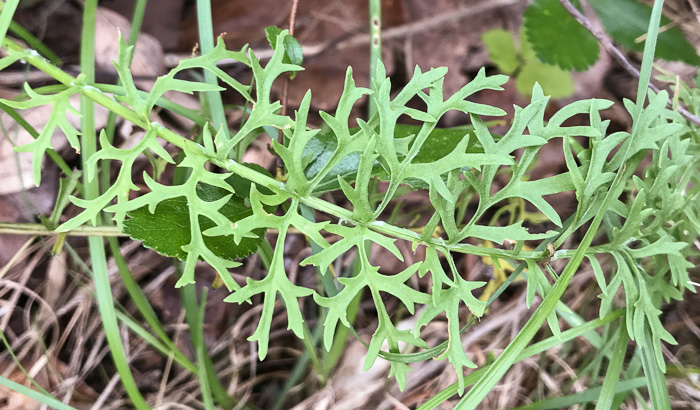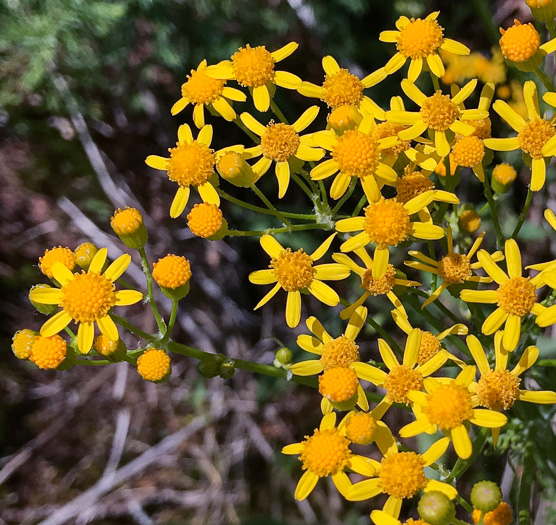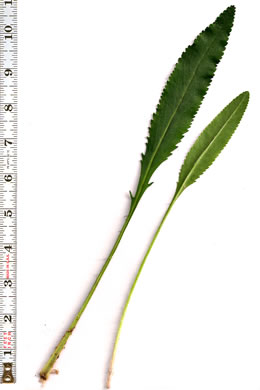South Carolina's Natural Wildflower Communities —
THE MOUNTAINS:
The granitic dome community
Granitic domes
The typical granitic dome community is found mostly in the mountains but occasionally occurs on monadnocks (mountains of resistant rock) in the piedmont. It occurs on exposed upper slopes or ridges, usually as steep exposures, except for small gently sloping areas at the top. It is recognized by the smooth (exfoliating) surface of the exposed rock. Granitic domes are sometimes called exfoliation domes because they consist of layers of rock similar to the layers of an onion. These layers were produced during the formation of the rock as a means of relieving pressure.
Soils generally are shallow, and trees and shrubs are restricted to the margins or to pockets of deeper soil, which tend to be rare because of the sparsity of fractures or crevices. Vegetation is zoned by soil depth. Only mosses and lichens occupy bare rock, but once a soil layer develops, a variety of vascular plants soon invade.
Herbaceous species that are usually only found on domes include
mountain dwarf-dandelion (Krigia montana),
Allegheny live-for-ever (Sedum telephioides),
cliff saxifrage (Saxifraga michauxii),
divided-leaf ragwort (Senecio millefolium),
and spikemosses (Selaginella tortipila or S. rupestris).
Herbaceous species that are also common to granitic domes include
elf orpine (Diamorpha smallii),
smallflower phacelia (Phacelia dubia),
eggleaf rushfoil,
several species of broomsedge,
hairy and woolly lip-fems (Cheilanthes lanosa and C. tomentosa),
pineweed,
and Small’s ragwort.
Woody species that occur at the edges of the dome or in mats that have deep soil include
fringe-tree,
wafer-ash (Ptelea trifoliata),
winged sumac (Rhus copallina),
eastern red cedar,
Virginia pine, and,
depending on the depth and richness of the soil, a variety of other xerophytic to mesophytic trees.
Seepages at the upper edges may harbor interesting species such as
round-leaf sundew (Drosera rotundifolia),
horned bladderwort,
flatrock pimpernel, and
several species of meadow-beauty (Rhexia mariana and/or R. virginica).
Higher elevation granitic domes may include such species as
sand myrtle (Leiophyllum buxifolium),
prolific St. John’s-wort (Hypericum prolificum),
and Table Mountain pine (Pinus pungens).
Granitic domes associated with calcium-producing rocks are sometimes described as a basic variant of granitic domes. These domes harbor such calcium-loving species as
yellow honeysuckle (Lonicera flava),
southern thimbleweed (Anemone berlandieri),
Canada columbine (Aquilegia canadensis),
smooth indigo-bush (Amorpha glabra),
Small’s beardtongue (Penstemon smallii),
hairy mock-orange (Philadelphus hirsutus),
and Seneca snakeroot (Polygala senega).
An abundant presence of red cedar along the outcrop margins is often a good indicator of this variant. The adjacent woodland often is quite rich, even on the shallow soils of the southern exposures.
A second variant of granitic domes is the acidic cliff. The community is characterized by sheer slopes, exposed rock, and a canopy cover that is less than 25%. The best sites have sheer exposures of fractured, acidic rock. This variant is common in the mountains and rare in the piedmont. In the driest, most open sites, many species of typical granitic domes or granitic flatrock outcrops are present, especially
broomsedges,
oat grasses,
spikemosses,
hawkweeds,
and ragworts.
On moister sites, granitic dome species such as
mountain dwarf-dandelion
and cliff saxifrage may occur.
Because of the fractured rock, crevices are common and rock-loving ferns are present, including
lipferns and
mountain spleenwort (Asplenium montanum).
Shrubs, trees, and other herbs are typical of the surrounding forest community; they may be mesic, xeric, or even boggy species depending on the nature of the adjacent forest community. Because of the open canopy, a variety of weedy species may occur, including
fleabanes (Erigeron spp.),
butterfly-weed (Asclepias tuberosa subsp. tuberosa),
and Indian pink.
South Carolina's Natural Wildflower Communities is adapted from A Guide to the Wildflowers of South Carolina by Richard D. Porcher and Douglas A. Rayner. Used by permission.
To see pictures or additional information about a particular plant, click its name or its picture.

